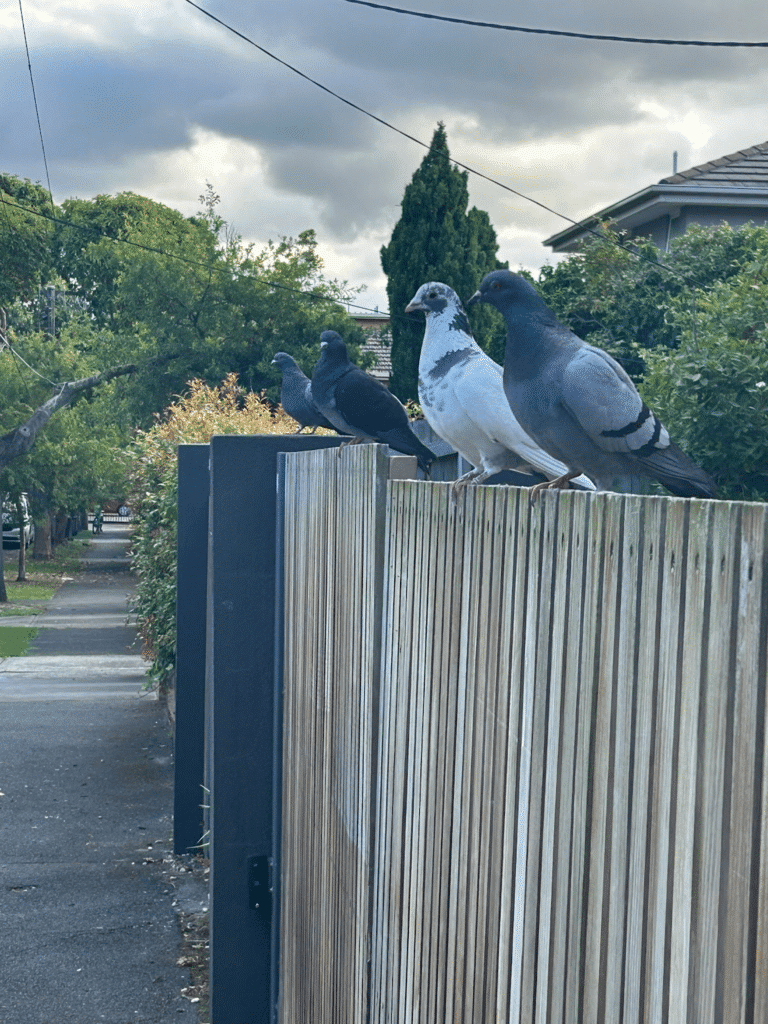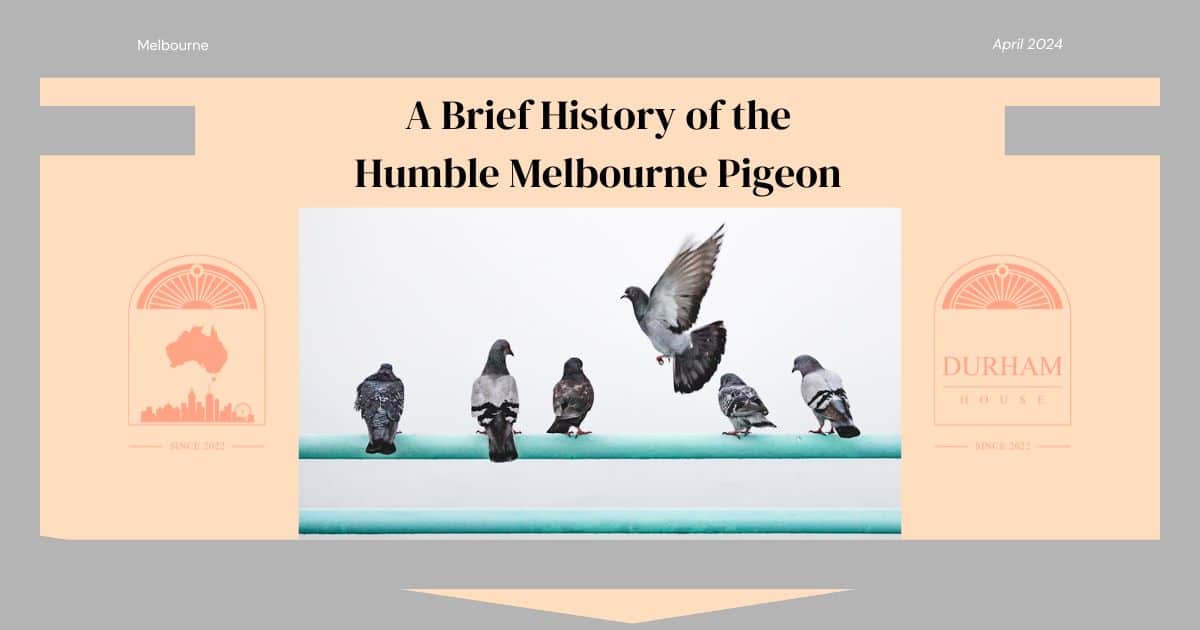Whether you’re in the city or suburbs, in the deepest Australian forest or the quietest rural town – you’ll be able to find Pigeons. Australia has a rich and diverse biosphere, full of unique flora and fauna, with one of our most diverse and populous species being the incredibly prolific (yet decidedly low-key) pigeon.
The pigeon is thought of as a pest in the city. They are everywhere, they defecate on your car, and they’re remarkably bold in their attempts to scam food out of your hands. Yet for their fairly scummy reputation, once you dig under the surface a little you will find that the bird has been associated with finery, military strength, hope, and even divinity.
Pigeons and Gods
Pigeons, “pigeon squab” when young, are magnificent birds, and very few birds can claim their wealth of history or diversity.
Pigeons come from the animal family Columbidae (ko – LUM- bih – dee). This term, generated from the taxonomic order Columbiformes (lit. pigeon/dove shape) had two distinct usages in ancient Latin society. Additionally, architectural evidence in Greco-Roman societies links the pigeon and dove (both members of the same taxonomy) to the Goddesses of love, fertility, and sexuality in both cultures. For the Greeks, they were the bird of Aphrodite, and for the Romans Venus. There is even evidence to suggest that Columbidae was used as a term of endearment in ancient Rome, effectively calling someone “bird of Venus.”
Furthermore, there is archaeological evidence in the form of ancient Greek coins, showing Zeus resting under trees populated by Pigeons and Doves. The feminine counterpart of Zeus, Diona had three prominent priestesses that were named “The Pleiades”, or “the Doves.”
It can feel odd to associate the common, and often believed to be disease-ridden pigeon with gods and goddesses of fertility and sex. However, because pigeons mate all year round and practise monogamy, they were likely considered symbols of fiery, passionate romance and reliable, steadfast love. Even though the Greeks worshipped several birds as divine, the pigeon and dove drew particular attention due to their unique homing abilities; which cemented them as singularly reliable, steadfast companions.
Aside from their ancient associations, it seems that the Columbidae family was due for yet more divinity, as the famous dove holding the olive branch that appears at the end of the Noah story in Christianity has cemented the bird’s reputation as a bringer of peace. Yet the Olive branch coupled with the actual Greek word peristera in this story, has led some researchers to believe that the bird could have originally been a humble pigeon – changed by time’s effects on culture and language.

Magnetic and Magnificent
Funnily enough, as times changed the pigeon’s ability to home rendered it from divine to practically life-saving. While in ancient times a pigeon’s homing capabilities were likely attributed to it being divinely assisted by its godly patrons, in fact, it is due to a much more scientific (and depending on your outlook, much cooler) phenomenon – magnetoreception.
The core of the Earth is a molten ball of iron. This huge deposit of ferrous material provides Earth with a naturally-generated magnetic field. While this field is responsible for protecting Earth from the intense solar winds given off by our sun, for many animals in nature it carries an important secondary function. The geomagnetic field creates an accurate and precise map of the globe, guiding migratory patterns. Many animals use this map to guide them on their various travelling patterns and coordinates. These animals include many types of birds, not least of which is the pigeon.
Pigeons can sense this magnetic field through a variety of means and use it to return to their “home.” They effectively have an internal compass, and the ability to “see” a map painted in magnetism that covers our globe.
Release the Birds of War
This unique ability to read their precise location, as well as their high rate of reproduction, speed, ability to cover long distances, and conservative eating habits, pigeons have been used extensively as Carrier Birds, birds used for the delivery of vital messages, during wartime.
Carrier pigeons were vital to the success of several major wartime victories, and their ability to navigate is credited with saving thousands of lives. Pigeons have even won military medals for gallantry in wartime.
Why pigeons, however?
As WWI and WWII exploded, all war fronts became exceedingly large. As the world’s logistics became tied up in running the war effort, reliable lines of communication had to be established, and fast. Commanders had to send orders to all corners of the world and be able to do so in a way that was untraceable, undetectable, fast, and reliable.
The answer came in the form of the scrappy pigeon.
Pigeons can fly at around 50-60 km/h, and sustain altitudes of 6000 ft. Their ability to home flawlessly meant they could get where they needed to go and, barring interception by falcon or being shot down by enemy troops, always returned.
Pigeons also breed all year round, making about 12 eggs yearly with their partner, meaning that even if a pigeon is lost it can soon be replaced. They are incredibly docile, making them easy to train. They also don’t take much feeding and thrive in captivity which makes them an excellent (and often overlooked) candidate for a family pet.
Essentially, pigeons represented exactly what was needed for wartime communication. A cheap, endless resource that could be relied upon not to lose messages to the enemy, that could travel great distances with tremendous speed and would remain almost invisible to the enemy. A perfect messenger, a perfect soldier.

The Modern Pigeon
Pigeons have a bad rap, and it’s entirely our fault. Only recently has humanity’s widespread hatred of the humble pigeon occurred, as newspapers in the 1930’s and 1940’s claimed that they were a nuisance. Their flocking and defecating habits had rendered them as filthy, disgusting, stinky creatures. Their subtle blue-grey plumage has also earned them some ire, as has their proclivity for eating rubbish.
However, these are not their fault. If bird poo is covering public areas that’s an issue for local sanitation, not bird culling. Although there are a range of diseases transmitted by pigeons, it’s easy enough to avoid with some common sense and basic hygiene practices.
However, research shows that humane solutions to control bird populations are the most effective method. The problem isn’t the birds; these fantastic, fascinating, and beautiful creatures are simply living according to their evolution, and eating/flocking at the world around them.
Perhaps it’s time we lift the humble Melbourne Pigeon from the social doldrums it has been erroneously cast in.






